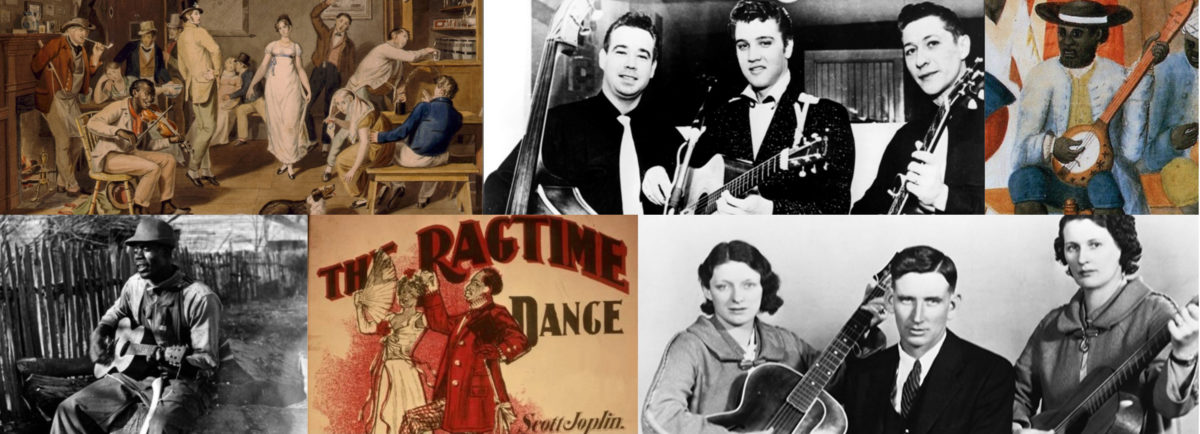Audio Investigation Slide
The Suffrage Flag: Audio Investigation Slide
-
- Click the link above to launch the slide deck (4 slides).
- Slide #1 shows the following timeline:
-
- 1820s-1850s - Universal Manhood Suffrage; gradual abolition of property requirements gives all white me the right to vote
- 1913 - 17th Amendment ratified; voters now elect their U.S. Senators directly
- 1870 - 15th Amendment ratified; African American men win the right to vote
- 1920 - 19th Amendment ratified; women win the right to vote
-
- Briefly review with students the expansion of voting rights from the Jacksonian era to the 1920s, making sure to mention the movements with which each gain was associated: Jacksonian democracy, the abolition movement (in which many women’s suffrage leaders were active) and Radical Republicans, the Progressive movement, and the women’s suffrage movement.
- Advance to slide #2 which shows the text of the 15th and 19th Amendments.
- Students should recognize immediately that the wording of the two is basically identical, except that the 15th Amendment does not include sex and the 19th Amendment only addresses sex. If they do not catch this, point it out. Remind them again that women’s suffrage leaders were also active in the abolition movement, and that the women’s suffrage movement split over whether to support the final version of the 15th Amendment, which excluded them.
- Advance to slide #3 and invite students to respond to the following question shown on the slide:
-
- Why do you think that women were not included in the final version of the 15th Amendment and did not win the vote until 50 years later?
-
- Advance to slide #4.
- Click the media player in the bottom right corner of the slide to begin audio playback of the song.
- Invite students to respond to the following questions shown on the slide:
-
- Based on the lyrics, how was winning the right to vote going to benefit women and the country? List as many examples as you can and cite specific lyrics to support your answer.
-
Recommendations
This song is useful to introduce a lesson on the women’s suffrage movement as part of a unit on the Progressive Era.
The brief review of the women’s suffrage movement and student responses to both questions provide a solid foundation for addressing traditional 19th century views concerning the proper extent of women’s visibility and activity within the public sphere that persisted into the 20th century. You might, however, want to remind students of how those views developed, or ask them to draw upon their prior knowledge of material they have covered, by tracing the shifts in predominant attitudes from the couverture of the colonial era forward. This can include the increased visibility of women and new platforms for their voices during the First Great Awakening, the concept of Republican Motherhood, and women’s activism in reform movements (in addition to the suffrage cause) from the Second Great Awakening through the Progressive Era. Students can create a timeline or a digital scrapbook using either images found online or of their own design to help them visualize and understand the change and continuity over time. Highlighting these topics will reinforce the association between women’s roles as caregivers and moral guardians in the private sphere of the home and changing perspectives on the benefits of women’s participation in the public sphere. Students may infer that an unwillingness to completely abandon the notion of separate spheres contributed to the failure to include sex as a component of the 15th Amendment, even if they are not familiar with these exact terms. You may also want to point out to students that not all women benefited equally from the gradual change in attitude; Black women living in southern states, where state government imposed barriers to suffrage for non-white people, were not able to exercise their right under the 19th Amendment.
Discussion of the generations-long struggle for women’s suffrage, and the continued denial of that right to Black women in the South, provides a springboard for students to consider the ratification of the 19th Amendment in the context of broader questions about citizenship, representative government, and democratic values. You can revisit the Bill of Rights, as well as the other amendments covered to this point, in order to address the rights and responsibilities of citizens, and to explore suffrage as a mechanism of representative government and its expansion as a reflection of the democratic ideal of fairness. You may also want to include the other electoral reforms of the Progressive Era, the 24th Amendment, the Voting Rights Act of 1965, and the 26th Amendment to underscore the centrality of civic engagement to the American system of government and to reinforce its importance to the American people.
Vocabulary
suffrage - the right to vote
To our manor born is a play on the phrase, “To the manor born,” - “meaning born into, or naturally suited to, upper-class life”
laden – heavily loaded or weighed down
mar – impair the quality of; spoil
Additional Resources
Primary Source Strategies
Printable worksheets with response prompts that guide students in analyzing songs as primary sources.

